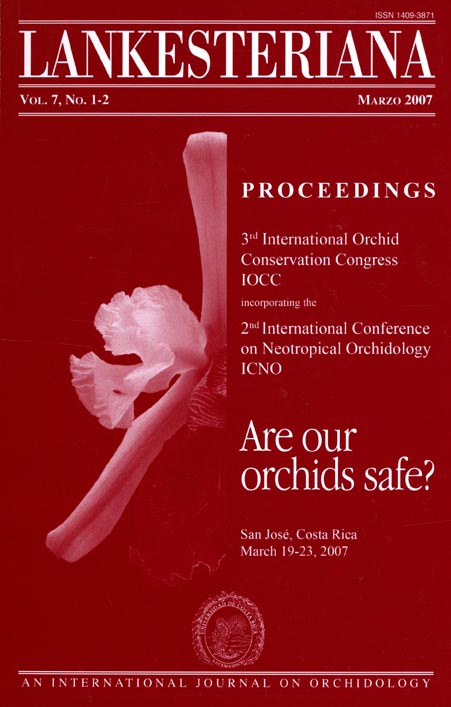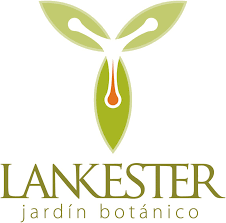Understanding the distribution of three species of epiphytic orchids in temperate Australian rainforest by investigation of their host and fungal associates
DOI:
https://doi.org/10.15517/lank.v7i1-2.18389Resumen
Understanding the environmental constraints that affect species distributions are critical to the mainte- nance of biodiversity. The abundance of epiphytic organisms, those that grow on another substrate, such as a tree or rock, is a direct consequence of the avail- ability and distribution of these substrates (Ackerman et al. 1989). In the case of epiphytic orchids it is also due to the presence of orchid mycorrhizal fungi (OMF). For an orchid, crucial to its germination and establishment, is its association with an OMF. The OMF provides a carbon source to the developing orchid embryo (Rasmussen 1995). Although recipro- cal carbon transfer has been demonstrated in mature plants of a green, terrestrial, orchid species, Goodyera repens (Cameron et al. 2006), it is generally believed that OMF receive no immediate benefit from their association with orchids. Therefore, it would appear intuitive that orchids would associate with all OMF available within their local environment and that they would actively seek this association.
Descargas
Descargas
Publicado
Cómo citar
Número
Sección
Licencia
Conforme con las Políticas de Acceso Abierto promovidas por la Universidad de Costa Rica, los derechos de autor de todos los artículos publicados en Lankesteriana se encuentran bajo una licencia Creative Commons y pueden ser descargados gratuitamente. Los derechos de autor y de publicación pertenecen a la revista bajo la licencia CC BY-NC-ND 3.0 CR.
Before the publication of the materials submitted by the author(s) in LANKESTERIANA, the author(s) hereby assign all rights in the article to the Lankester Botanical Garden.





